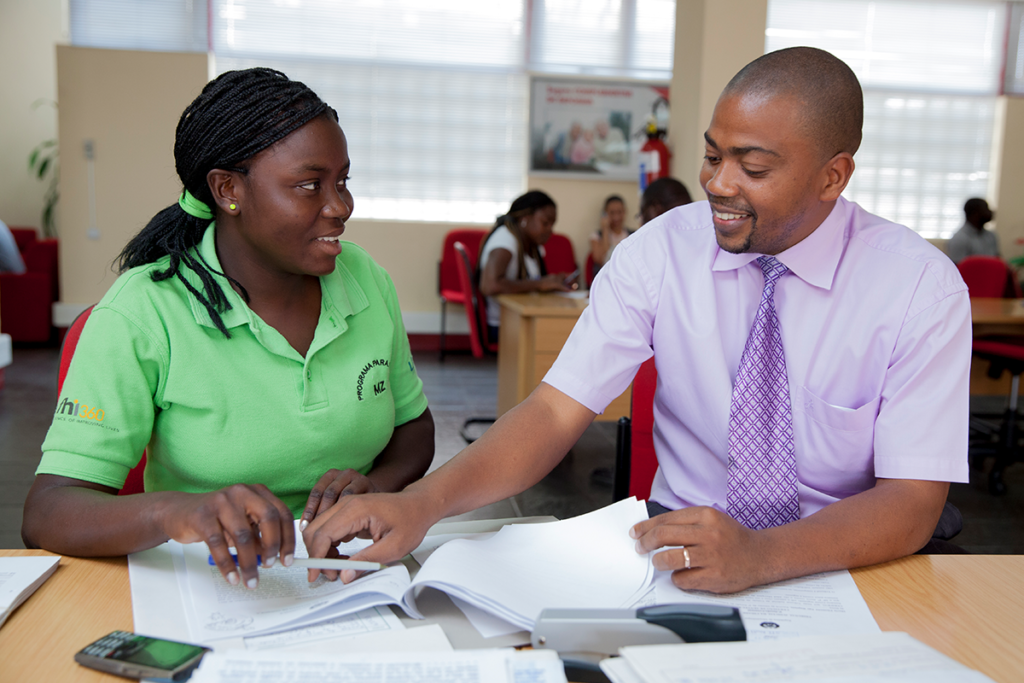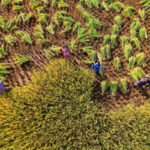Youth resilience is a major focus of youth development policies and interventions and a key topic of discussions among donors and implementers. Development conferences such as the Global Youth Economic Opportunity (GYEO) Summit and the SEEP Conference profile interventions that aim at building youth resilience in the face of sudden shocks, such as orphanhood, natural disaster, and violence, or protracted stressors, such as long-term unemployment, chronic poverty, marginalization, and discrimination. At the same time, the increasing use of holistic and multi-dimensional youth development approaches illustrates that donors and implementers believe that strengthening youth resilience requires focusing on more than one aspect of a young person’s life. Positive youth development (PYD) approaches integrate multiple aspects of youth development including a focus on youth empowerment vis-a-vis their environment. Evidence supporting the effects of PYD-based interventions on youth resilience, however, remains thin.
In this post, we describe an ongoing FHI 360-funded study designed to provide new evidence on the relationship between PYD-based interventions and youth resilience using a mixed methods approach to analyze program data from two very different contexts: violent extremism in Tunisia, and orphanhood and extreme poverty in Mozambique. This research examines the contributions of PYD programming to youth and adult outcomes and will provide findings that can be used for designing evidence-informed projects intended to build youth resilience.
Research question and concepts
The primary research question is: What are the effects of positive youth development (PYD)-based interventions on youth resilience?
Our conceptualization of resilience focuses on the aspect of internal competence – in other words, resilience as a “capacity for adapting to changes and stressful events in a healthy way” (Lee, Cheung and Kwong, 2012). While our focus is internal competence, we recognize that resilience is also affected by interactions between the individual and his/her environment, that is, people are affected by the environment in which they live and vice versa, making them inextricably linked. As seen in figure 1, this link to the environment contributes to resilience when it provides youth with access to protective factors. Therefore, our hypothesis is that all three domains of PYD (agency and assets, contribution, and enabling environment) can contribute to the development of youth resilience both by building self-efficacy and increasing access to protective factors.
To address the research question, we will explore the following sub-questions:
- How do youth and adults in the targeted communities define resilience?
- How and what aspects of PYD were implemented and to what effects?
- How do youth approach challenges? (According to the youth themselves and to the adults in their environment)
- Have youth changed the way they address challenges since program participation? Why?
Methodology
Our study employs a mixed method design that relies heavily on qualitative methods that include in-depth interviews and key informant interviews – life stories – supported by quantitative pre- and post-tests with nonequivalent comparison groups. Both projects are collecting pre- and post-test data related to the General Self-Efficacy (GSE) scale (119 participants in Tunisia and 194 participants in Mozambique) and social network data as part of their monitoring and evaluation. Both projects use the same survey tool asking about who project participants communicate with and where they spend their time.
In both Tunisia and Mozambique, we purposively selected 12-16 youth who have faced significant obstacles for mini-case studies to identify why some youth have succeeded despite obstacles and why others are struggling – and whether the interventions have anything to do with their success or lack of success. Targeting “extreme cases” to study is particularly useful for understanding complex phenomena, such as the relationship between PYD interventions and resilience, especially when the number of cases studies is limited (Patton, 2015).
In the case of Tunisia, significant obstacles include those that increase the vulnerability of youth to join violent extremist groups. Youth selected for mini-case studies have experienced or are still experiencing at least two of the push or pull factors that increase this vulnerability:
Push factors
- Experiences with violence in the hands of security forces, domestic violence or abuse
- Economic despair or deprivation, e.g., long-term unemployment despite high levels of education
- Grievances due to feelings of injustice, e.g., repetitive unfair treatment by government institutions
- Lack of connection or feelings of not belonging, e.g., mismatch between youth aspirations and the values or expectations of the community or family
Pull factor
- Exposure to violent extremist groups, recruiters or radical ideology
In the context of Mozambique, project participants are orphans and vulnerable children (OVC) who were or continue to be experiencing one or more of the following factors:
- Unemployment
- Chronic health issues (mental or physical)
- Extreme poverty
In both contexts, interviewers will ask questions about the following topics: youth experience with adversity and their sense of opportunity; youth perceptions of the impact of the intervention in their life; youth assessment of their own resilience; and access to protective factors such as supportive families, caring adults, schools, etc.
The study’s quantitative analysis will employ propensity score matching or entropy balancing, to estimate the effects of the interventions on youth resilience. We will use demographic characteristics such as gender, age, first language, ethnicity/religion, educational attainment, enrollment status, and socioeconomic factors like employment status, number of dependents, etc. to achieve balance between treatment and comparison groups. This type of analysis will not establish causal relationships between the intervention and outcomes. The analysis may find correlations that will help unpack a smaller group of possible mechanisms by which the interventions are affecting youth resilience.
Projects in the study
The two projects that serve as case studies for this research are the USAID Sharekna project in Tunisia under the Countering Violent Extremism in the Middle East and North Africa (CoVE-MENA) Task Order, and the Mozambique Programa Para O Futuro project under YouthPower Action.
The Sharekna project (Sharekna is Arabic for “participate with us”) is a 28-month pilot activity designed to mitigate drivers of violent extremism and strengthen resiliencies by targeting demographic groups and geographies that are vulnerable to violent extremist recruitment and radicalization. As a community and youth resilience program, Sharekna aims to change behaviors, improve capacities, relationships and actions in a dynamic, complex environment. In each of the four Sharekna target communities, two intertwined pathways will contribute to strengthen resilience: one focused on individuals (youth ages 14–29), and the other on the broader community, or community stakeholders. (Read about how Sharekna uses youth video diaries here.)
The Programa Para O Futuro project is a youth development and employability program designed to help orphans and vulnerable children (OVC) and youth ages 15–17. The intervention enables youth to gain an integrated set of employability and technical skills and improved basic education competencies so that they can build better futures through quality livelihoods, improved health and civic engagement. It also provides parent support groups that improve youth-parent communication and relationships, “e-mentors” and an internship to help build a professional network and positive adult role models and an opportunity to practice employability skills, and peer education and youth-led clubs to support youth to contribute to their communities.
We anticipate that our findings will help understand how interventions for youth that use a PYD approach affect youth resilience. Our research continues through September 2018 and we plan to have a completed manuscript by December 2018.
We will share our findings in future posts!
Photo caption: Programa Para O Future, Mozambique
Photo credit: Jessica Scranton/FHI 360




